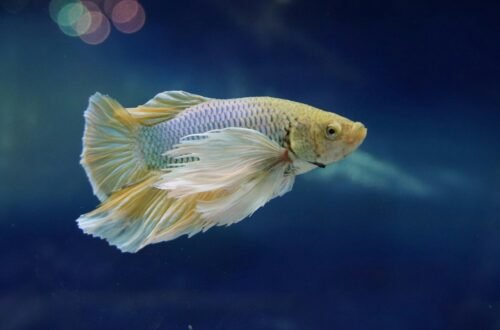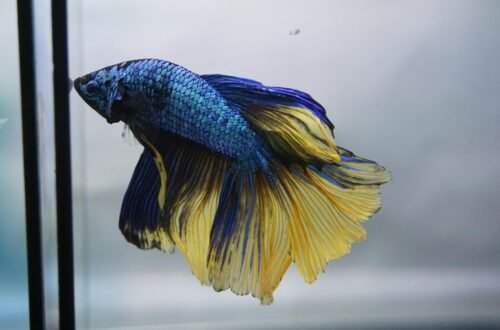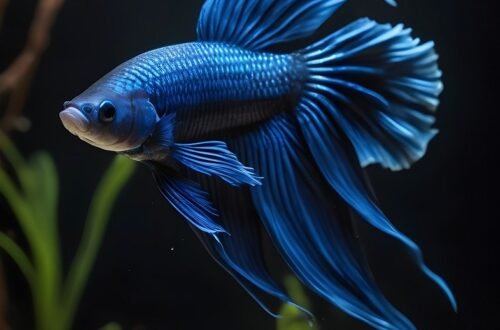Are you someone who loves the idea of having an aquarium but is worried about the time commitment? You’re not alone. Aquariums can be a beautiful and calming addition to your home, but they often come with the misconception that they require endless maintenance. The good news is, with the right setup and approach, you can enjoy an aquarium that’s low-maintenance and perfect for a busy lifestyle. In this guide, we’ll walk you through everything you need to know to create an aquarium that’s both beautiful and easy to care for.
Understanding the Basics of a Low-Maintenance Aquarium
A low-maintenance aquarium is one that requires minimal intervention to keep it running smoothly. This doesn’t mean it’s entirely hands-off, but it does mean that with the right choices, you can significantly reduce the time and effort needed to maintain a healthy environment for your aquatic friends. Key factors that contribute to a low-maintenance setup include choosing the right size and type of tank, selecting hardy fish and plants, and investing in efficient filtration and lighting systems.
Choosing the Right Aquarium Size
When it comes to aquarium size, bigger isn’t always better, but smaller tanks often require more frequent maintenance. A medium-sized tank, typically between 20 to 40 gallons, strikes the right balance for low maintenance. It offers enough water volume to maintain stable conditions, reducing the need for frequent water changes, while not being so large that it becomes overwhelming to manage. Additionally, consider the shape of the tank; rectangular tanks are often easier to clean and provide more surface area for oxygen exchange, which benefits the fish.
Selecting the Right Location for Your Aquarium
Where you place your aquarium can greatly impact how easy it is to maintain. Avoid areas with direct sunlight, which can encourage algae growth, and keep the tank away from heating or cooling vents to prevent temperature fluctuations. Ideally, your aquarium should be in a spot that’s easy to access for feeding and cleaning, but not in a high-traffic area where it might get bumped or jostled.
Picking Low-Maintenance Fish and Aquatic Life
Not all fish are created equal when it comes to care requirements. For a low-maintenance aquarium, choose fish species that are hardy, adaptable, and generally low-maintenance. Some great options include:
- Betta fish: These vibrant, easy-to-care-for fish thrive in a wide range of conditions.
- Guppies: Known for their resilience and ease of breeding, guppies are perfect for beginners.
- Corydoras catfish: These bottom-dwellers help keep the tank clean by eating leftover food.
When selecting fish, also consider their compatibility. Mixing species with similar care requirements can prevent the need for extra monitoring and adjustments.
Setting Up the Filtration System
A good filtration system is the backbone of any low-maintenance aquarium. Filters keep the water clean by removing debris, excess food, and harmful chemicals. Canister filters, hang-on-back filters, and sponge filters are all excellent choices, depending on your tank size and setup. Canister filters, while a bit more expensive, are incredibly efficient and require less frequent cleaning, making them a top choice for busy individuals.
Aquarium Substrate and Decorations
Choosing the right substrate can also impact maintenance. Sand or fine gravel is easier to clean than larger rocks or pebbles, as waste particles tend to stay on the surface where they can be easily vacuumed away. When it comes to decorations, opt for items that are easy to clean and won’t trap debris. Simple, smooth surfaces are best, and consider using artificial plants if live plants seem like too much work.
Choosing the Right Plants (or Going Plant-Free)
Live plants can enhance the beauty of your aquarium and even help with maintaining water quality by absorbing nitrates. However, they do require some care. Low-maintenance plants like Java moss, Anubias, and Java fern are hardy and don’t require special lighting or CO2 systems. If live plants aren’t for you, artificial plants can be a great alternative—they add aesthetic appeal without any care requirements.
Establishing a Proper Lighting System
Lighting is crucial not just for your plants (if you have them) but also for the overall health of your aquarium. Choose energy-efficient LED lights that are designed for aquariums. These lights are low heat, long-lasting, and come in a variety of spectrums to suit both plant and fish needs. Automated lighting systems with timers can simplify your routine by ensuring your tank gets the right amount of light without manual intervention.
Developing a Simple Feeding Routine
Feeding your fish is one of the most enjoyable aspects of aquarium keeping, but it’s important not to overdo it. Overfeeding can lead to excess waste, which increases maintenance needs. Develop a feeding routine that matches your schedule—once or twice a day is usually sufficient, and feeding small amounts ensures all the food is consumed, leaving little waste behind. Consider using an automatic fish feeder if your schedule is unpredictable.
Water Quality Management
Maintaining good water quality is essential for a healthy aquarium, but it doesn’t have to be labor-intensive. Regularly test your water for pH, ammonia, nitrate, and nitrite levels using easy-to-use test kits. If you’ve chosen the right tank size, fish, and plants, and have a reliable filter, you’ll find that your water parameters stay stable with minimal effort. Aim to perform partial water changes every two weeks or so—about 20% of the tank’s volume is usually sufficient.
Cleaning and Maintenance Tips
Even with a low-maintenance setup, some cleaning is inevitable. Divide tasks into daily, weekly, and monthly routines to make them more manageable:
- Daily: Check the fish, filter, and water temperature.
- Weekly: Clean the glass, check water parameters, and remove any debris.
- Monthly: Perform a partial water change and clean the filter if necessary.
Using tools like an algae scraper, gravel vacuum, and magnetic glass cleaner can make these tasks easier and faster.
Dealing with Common Issues
Even the best-maintained aquariums can experience issues like algae growth or fish illness. For algae, control light exposure and consider adding algae-eating fish like Otocinclus or Siamese algae eaters. For fish health, a well-maintained tank will prevent most problems, but have a quarantine plan ready in case illness does occur. If equipment fails,
having a backup plan, such as a battery-powered air pump, can be a lifesaver.
Automating Your Aquarium
Automation is a busy person’s best friend. From automatic feeders and lighting systems to self-cleaning filters, there are many tools available that can take over daily tasks. You can even set up reminders on your phone for water changes and filter cleanings, ensuring you never forget these crucial tasks.
Setting up a low-maintenance aquarium is all about making smart choices from the start. By selecting the right tank size, filtration system, fish, and plants, and using tools that simplify upkeep, you can enjoy the beauty and tranquility of an aquarium without it becoming a time-consuming burden. With a bit of planning and the tips from this guide, even the busiest individuals can experience the joy of keeping fish.
FAQs
- What is the easiest fish to care for in an aquarium?
- Betta fish are often considered the easiest, as they are hardy and require minimal space and care.
- How often should I clean my aquarium?
- For a low-maintenance setup, a partial water change every two weeks and a monthly cleaning routine is usually sufficient.
- Can I have a low-maintenance aquarium without plants?
- Absolutely! While live plants can help with water quality, a plant-free tank with good filtration can be just as low-maintenance.
- How do I prevent algae growth in my tank?
- Avoid overfeeding, control lighting, and consider adding algae-eating fish or invertebrates to help manage algae naturally.
- What are the best automated tools for aquarium maintenance?
- Automated feeders, lighting systems with timers, and self-cleaning filters are excellent tools for reducing daily maintenance tasks.






